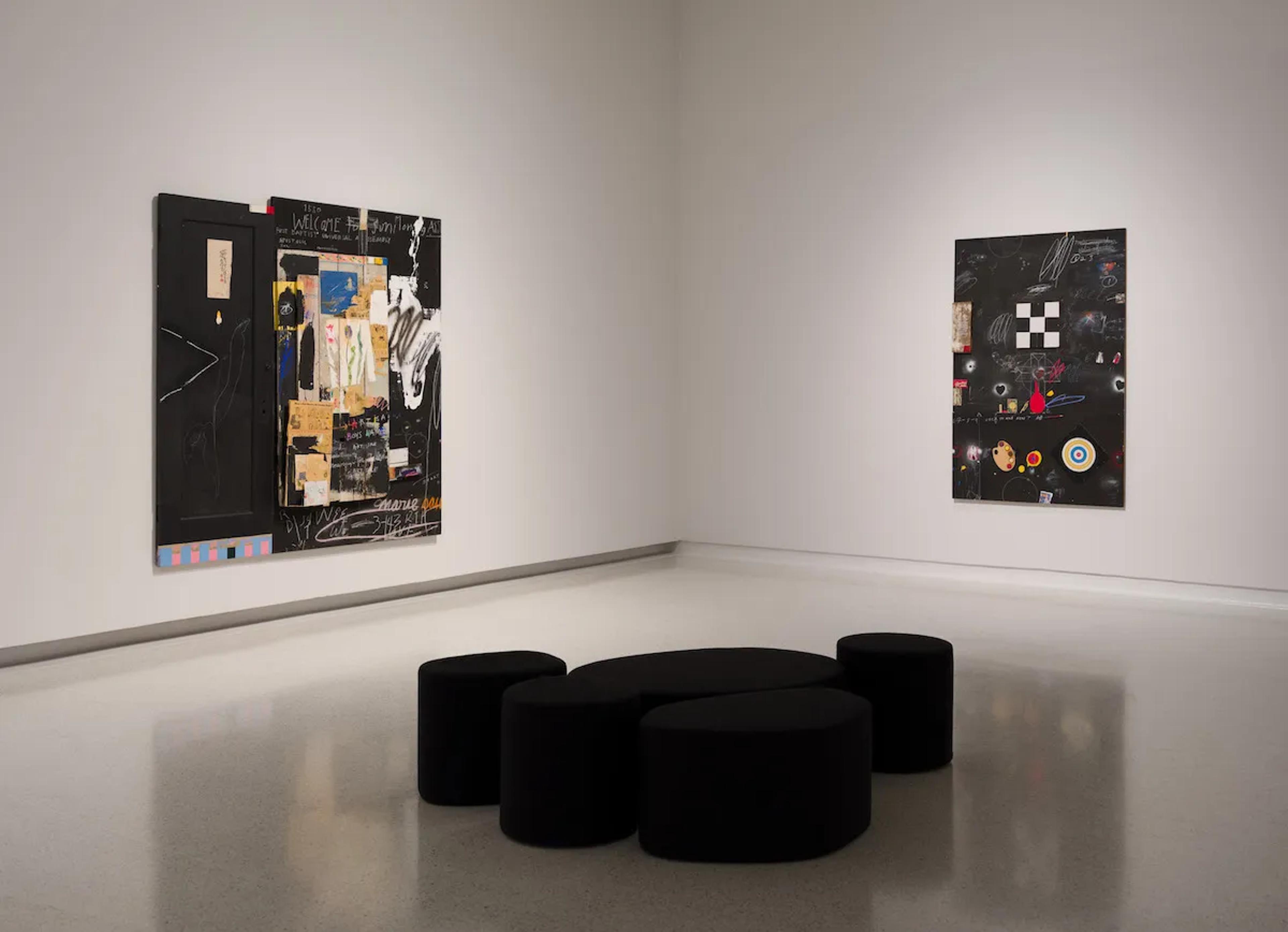ARTnews, review by Alex Greenberger
June 2025
The easiest—and laziest—way to describe Raymond Saunders’s bewitching paintings, now surveyed in a small but potent retrospective at the Carnegie Museum of Art in Pittsburgh, might be to call them “Rauschenbergian.” Just as Robert Rauschenberg once did, Saunders displays a penchant for messy scrawls and dirty canvases that he adorns with collected trinkets and pictures clipped from the media. Also à la Rauschenberg, Saunders produces artworks that feel like riddles, their surfaces rife with mysterious symbols and visual puns.
You can crack Rauschenberg’s codes if you work hard enough at it, but Saunders’s puzzles are a lot more elusive. The longer I stared at the 35 works in his Carnegie show, the less I seemed to understand them.
I must have spent a half-hour gazing at Passages: East, West 1 (1987), one of the many paintings here making extensive use of black for a background. Passages is monumentally scaled, just like many of its companions in the show, and features three chess boards, one drippy mustard-colored paint stroke, one appropriated reproduction of a Jan Brueghel still life (seemingly pinned to the canvas by a strip of tape but actually affixed to the surface by other means), one paintbrush (lightly used), several soap dishes (dirtied), what looks like wallpapering, and a whole lot more.
Divining all the connections between all these disparate objects is nearly impossible, but the key to the painting may be the Brueghel poster, which depicts a vase stuffed with flowers. Nearby, in chalk, Saunders has naturalistically sketched roses of his own rendering, placing his perennials beneath a magazine spread with a picture of a bouquet. Saunders seems to be playing representational games, asking: What’s the right way for an artist to portray a floral still life? Will any of those pictures ever measure up to the real thing?
But wait, there’s more. He’s crossed out the most finely rendered image here—the chalk one—as though he’d failed at his own exercise. Just when you think you know what Saunders is up to, you realize you haven’t gotten his art at all.
